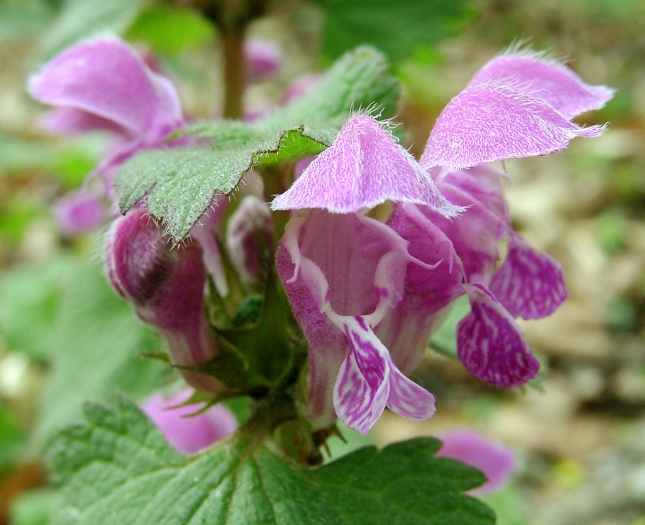Spotted Dead-Nettle
(Lamium maculatum)
Spotted Dead-Nettle (Lamium maculatum)
/
/

ArtMechanic assumed
CC BY-SA 3.0


















































Estimated Native Range
Summary
In the garden, Spotted Dead-Nettle is appreciated for its variegated foliage and long flowering season, making it an excellent ground cover for shady areas. It is also used in border planting and underplanting in woodland gardens. This plant thrives in part shade to full shade and prefers moist, well-drained soils. While it is generally low-maintenance, it can spread aggressively, potentially becoming invasive in some regions. Gardeners should be cautious and may need to manage its spread to prevent it from overtaking other plants. There are numerous cultivars available, selected for leaf variegation and flower color, such as ’White Nancy’ with white flowers and ’Beacon Silver’ with silvery leaves and pink flowers. Potential problems include slug and snail damage, and in wet conditions, root rot can occur.CC BY-SA 4.0
Plant Description
- Plant Type: Herb
- Height: 0.3-0.8 feet
- Width: 1-2 feet
- Growth Rate: Moderate
- Flower Color: Pink, Purple, White
- Flowering Season: Spring, Summer
- Leaf Retention: Semi-Deciduous
Growth Requirements
- Sun: Part Shade, Full Shade
- Water: Medium
- Drainage: Medium
Common Uses
Bee Garden, Border Plant, Deer Resistant, Drought Tolerant, Groundcover, Low Maintenance, Potted Plant, Rabbit Resistant, Rock Garden, Salt Tolerant, Showy Flowers, Street Planting
Natural Habitat
native to a variety of habitats including deciduous forests, forest edges, and grasslands across Europe and parts of Asia
Other Names
Common Names: Purple Dragon, Spotted Henbit, Variegated Dead-Nettle, Plettet Tvetand, Gefleckte Taubnessel, Hopeatäpläpeippi, Lamier Maculé, Lamier Tacheté, Flekktvetann, Gevlekte Dovenetel
Scientific Names: , Lamium maculatum, Lamium maculatum var. maculatum, Lamium cupreum, Lamium hirsutum, Lamium truncatum, Lamium maculatum var. cupreum, Lamium mutabile, Lamium affine, Lamium laevigatum
GBIF Accepted Name: Lamium maculatum (L.) L.